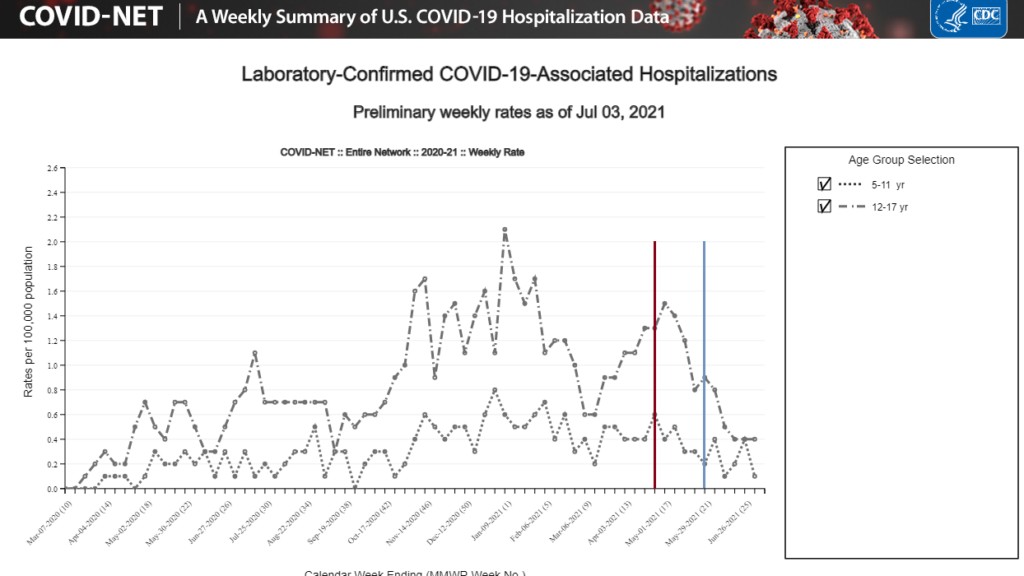Public health establishment can blame itself for vaccine hesitancy
The willingness of those within the public health establishment to engage in deception almost certainly contributed to the vaccine hesitancy that those same officials are now so frustrated with.
Rather than treating Americans like adults and providing them with complete and accurate information, public health officials have instead repeatedly misled the public, thereby undermining the very trust in these institutions necessary to achieve the widespread rates of vaccination sought.
The most famous example was Dr. Anthony Fauci’s appearance on 60 Minutes in March 2020, where he discouraged Americans from wearing masks by asserting that they would not provide any meaningful protection against COVID — a viewpoint that mirrored the official position of the CDC at that time.
Yet, less than a month later Fauci and the public health agencies were imploring everyone to mask up. The state of knowledge regarding the efficacy of masks was unchanged during this time. In other words, no new compelling scientific evidence emerged during those few weeks to warrant such a dramatic reversal.
It was, instead, the purpose of the message that changed. Contrary to our assumptions, Dr. Fauci’s original statements were not intended to be an accurate description of the efficacy of masks.
Fauci, as he would later explain, was instead concerned with making sure front-line workers had an ample supply of masks. Fearing that a shortage would result if Americans started buying up masks all at once, Fauci sought to prevent this by downplaying the usefulness of masks. In other words, Fauci’s original comments were designed to manipulate the behavior of the American public to achieve an unstated purpose, rather than honestly informing them about the usefulness of masks.
Fauci’s statements regarding herd immunity were similarly dishonest, as he explained in an interview with the New York Times:
“When polls said only about half of all Americans would take a vaccine, I was saying herd immunity would take 70 to 75 percent,” Dr. Fauci said. “Then, when newer surveys said 60 percent or more would take it, I thought, ‘I can nudge this up a bit,’ so I went to 80, 85.”
The CDC also engaged in similarly deceptive tactics to elicit behavior it deemed prudent. COVID is less deadly than the seasonal flu for those under age 20. Americans under the age of 35 are, on average, more likely to die from car accidents and other accidental deaths than COVID. In other words, COVID poses no meaningful risk to young people, especially healthy young people[1]. Yet, the CDC recently became so obsessed with increasing vaccination rates among teens that the agency resorted to misleading the public.
Specifically, CDC Director Rochelle Walensky went on national media to assert that a new report from her agency showed a “troubling” rise in the teen COVID hospitalization rate. The Washington Post accurately summarized Walensky’s position thusly: “CDC director urges parents to vaccinate teens, pointing to increase in severe cases.”
Yet, Walensky’s claim — that new data emerged to show teens to be at greater risk from COVID than previously thought, and thus in urgent need of vaccination — was false. And both she and the agency knew it.
The COVID teen hospitalization rate is shown in the chart below. The red line is the cut-off date (April 24th) used by the CDC in their June 4th report, at which point the teen hospitalization rate was 1.3 per 100,000. The blue line reflects the most recent data (May 29th) that was available to the CDC on June 4th, when they presented their report to the public:
On June 4th, as the CDC director was imploring children to get vaccinated because of an alleged dramatic rise in hospitalizations, the agency’s data showed that the teen hospitalization rate was, in fact, at a relatively low level, after several weeks of dramatic declines.[2]
Given that Americans rely on the CDC to inform them about the safety and efficacy of vaccination, doing anything that undermines the agency’s ability to be seen as completely objective and unbiased — like misleading the public by presenting incomplete data — risks damaging the trust necessary to achieve widespread vaccination.
The irony, of course, is that the unbiased data makes a compelling case for vaccination on its own. But rather than treating Americans like adults and simply reporting the facts, the CDC likely increased vaccine hesitancy by engaging in such needless fearmongering.
In other words, if you want the public to trust you, don’t lie to them!
Sadly, this lesson has not been learned at all. As journalist David Zweig explained in a must-read report for WIRED magazine, the CDC is currently “exaggerating the risks of Covid-19 to young people [while] underplaying the potential risks of the vaccine to them.”
Rather than calling for unjust and unethical mandates, public health officials should instead focus on earning the trust of those Americans they describe as “vaccine hesitant.” Simply providing accurate information without spin would be a great place to start.
